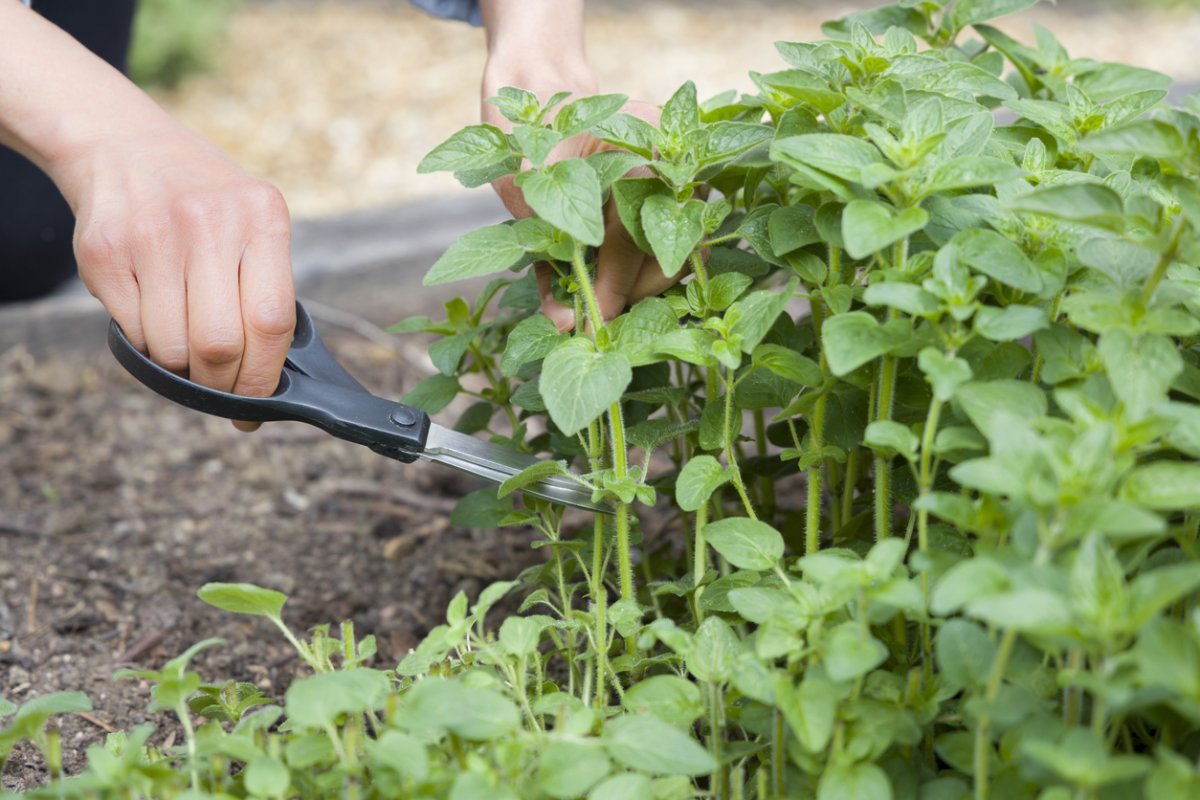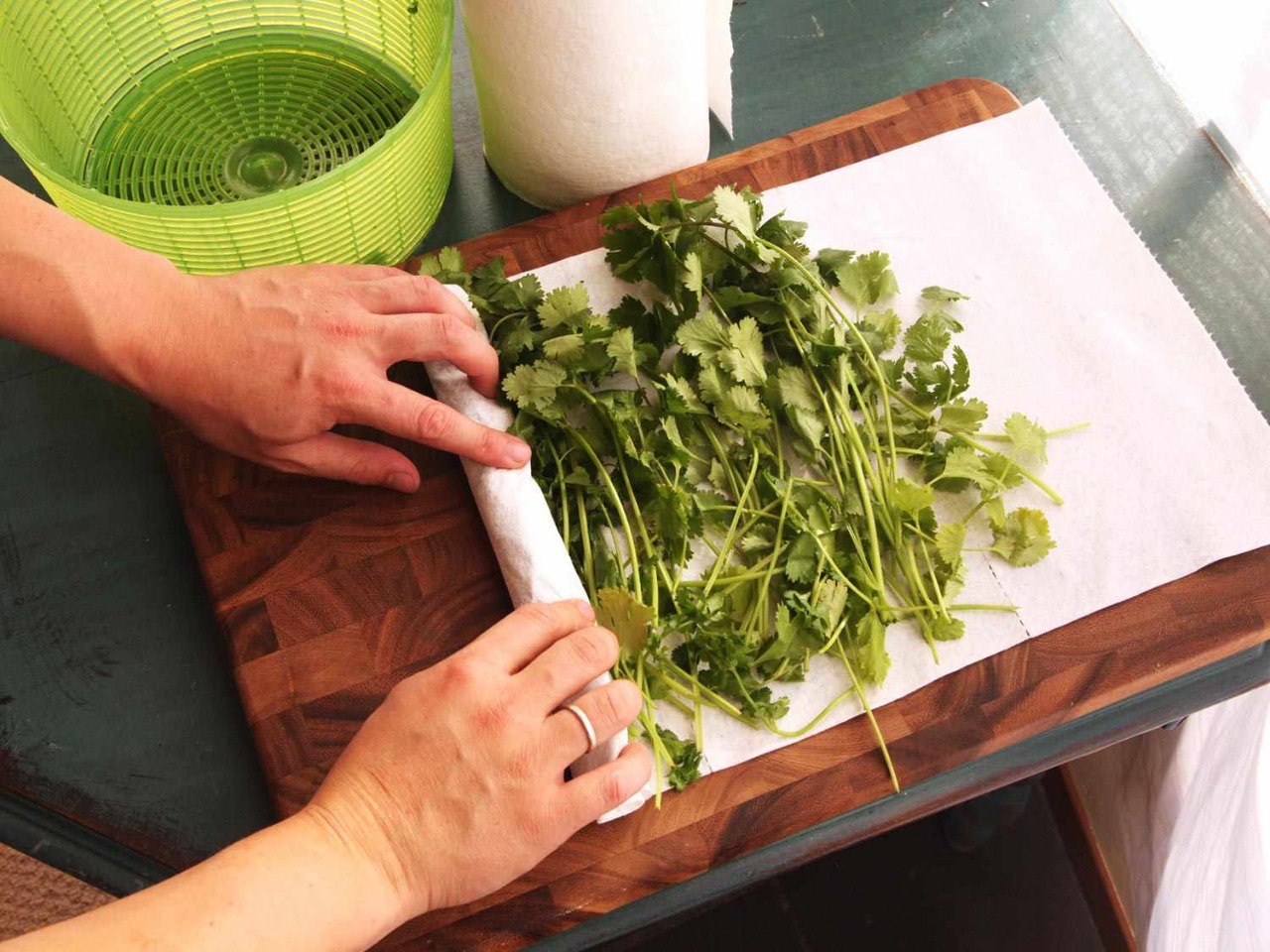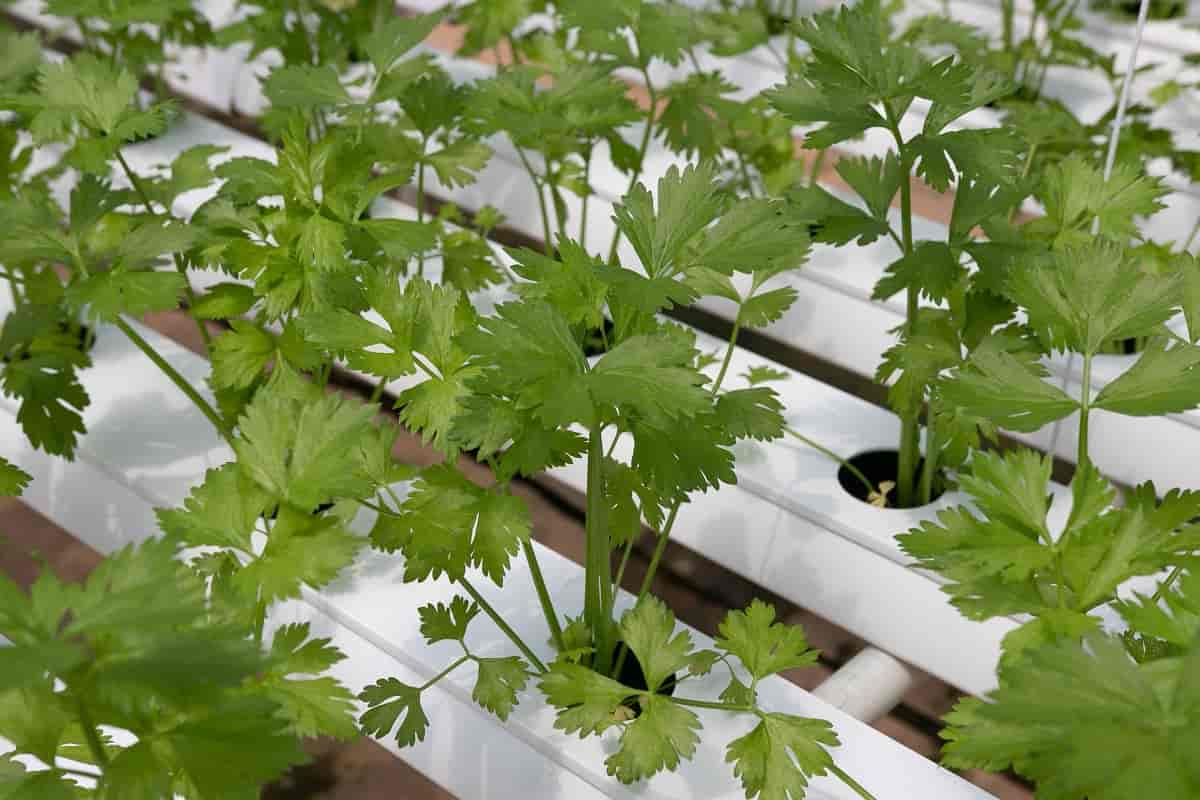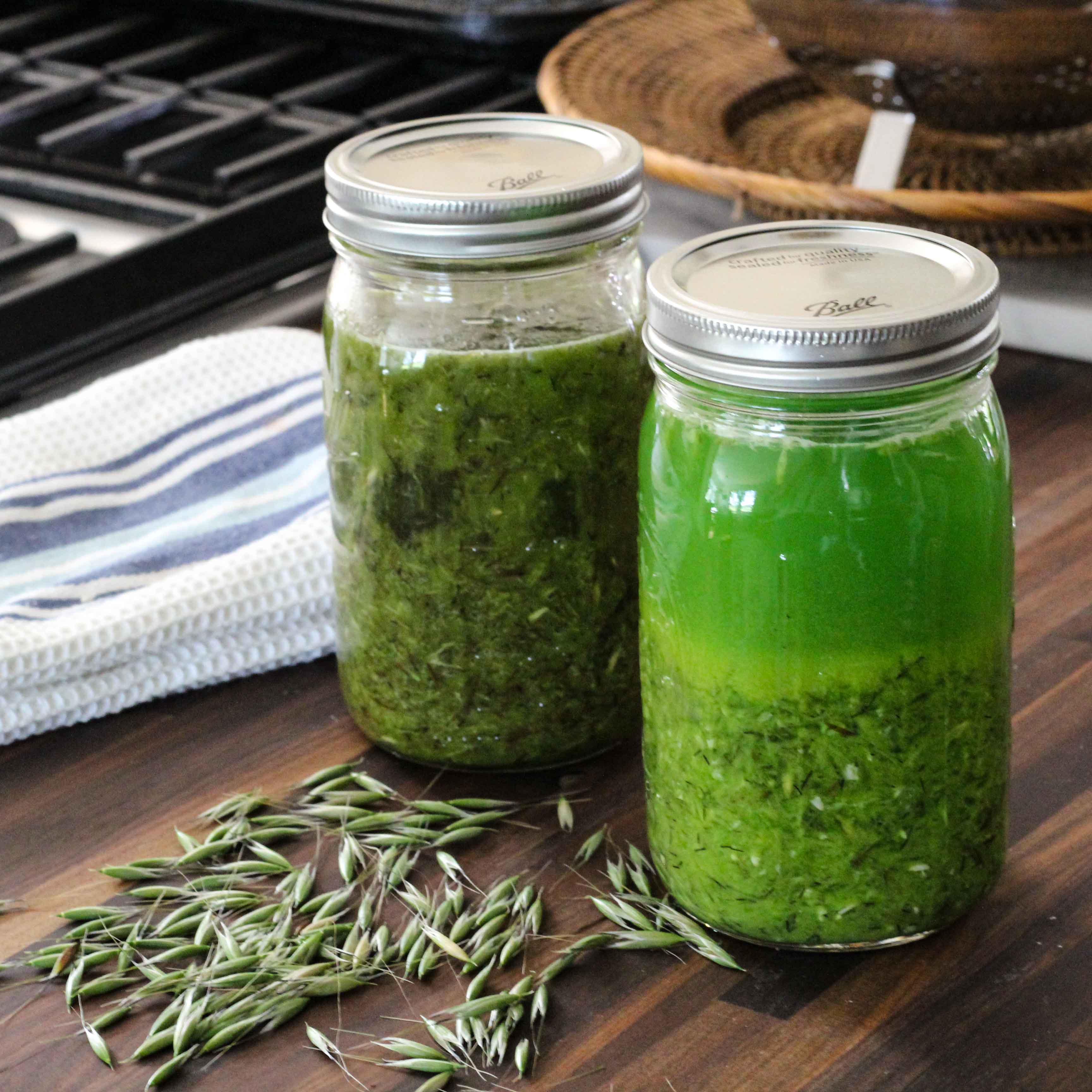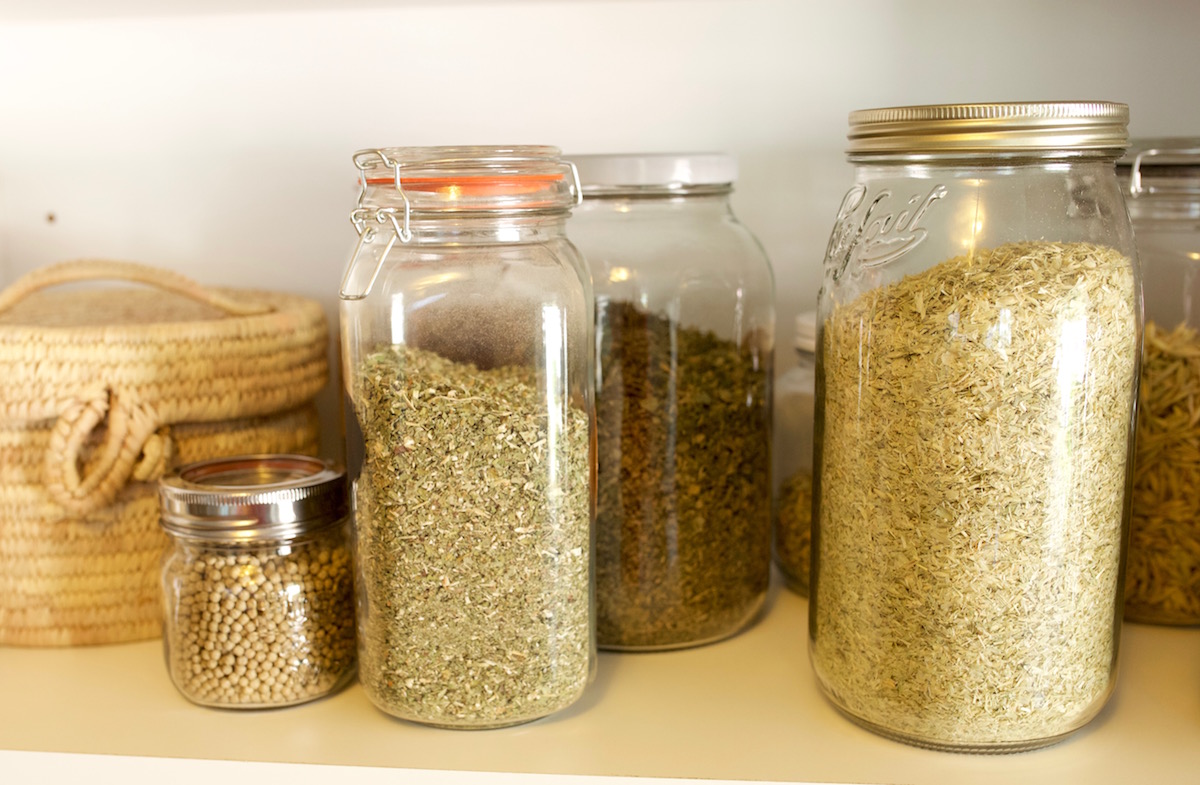Home>Gardening News and Trends>Gardening Trends>How To Block Progesterone With Herbs


Gardening Trends
How To Block Progesterone With Herbs
Published: September 29, 2023
Learn about the latest gardening trends and discover effective herbal remedies to block progesterone naturally. Enhance your gardening skills with these insightful tips.
(Many of the links in this article redirect to a specific reviewed product. Your purchase of these products through affiliate links helps to generate commission for Chicagolandgardening.com, at no extra cost. Learn more)
Table of Contents
Introduction
Welcome to the world of gardening, where beauty and nature come alive in vibrant colors and lush greenery. Gardening is not just a hobby; it’s a way of life that connects us to the earth and allows us to create stunning landscapes and bountiful harvests. As gardening continues to gain popularity, it’s important to stay up-to-date with the latest trends and techniques to make the most of your gardening endeavors.
In this article, we will delve into the ever-changing world of gardening trends and explore how you can optimize your gardening efforts. Whether you are a seasoned gardener or just starting out, understanding the latest trends can help you transform your outdoor space into a stunning oasis.
The gardening world is constantly evolving, with new techniques, plants, and design concepts emerging each year. By staying informed about the latest trends, you can create a garden that not only showcases your personal style but also incorporates sustainable practices and benefits the environment.
From embracing organic gardening methods to incorporating unique and exotic plants, there are numerous trends that can elevate your gardening experience. Additionally, incorporating technology and smart gardening solutions can make gardening more efficient and enjoyable.
In this article, we will explore key gardening trends that you must be aware of to unleash your green thumb to its full potential. So, let’s dive into the fascinating world of gardening trends and discover how you can transform your outdoor space into a natural masterpiece.
Understanding Progesterone
Progesterone is a hormone that plays a vital role in the female reproductive system. It is primarily produced in the ovaries by the corpus luteum and is responsible for regulating the menstrual cycle and supporting pregnancy. Progesterone levels fluctuate throughout the menstrual cycle, reaching their peak during the second half, also known as the luteal phase.
Progesterone is crucial for preparing the uterus for implantation and maintaining a healthy pregnancy. It helps thicken the uterine lining and prevents the uterus from contracting, which could potentially lead to the shedding of the lining and miscarriage.
Aside from its role in reproduction, progesterone also has numerous other effects on the body. It helps regulate mood, promote bone health, and support the functioning of the central nervous system.
While progesterone is an essential hormone for the female body, there are instances where blocking its effects may be desired. Certain medical conditions, such as endometriosis, fibroids, or hormonal imbalances, may benefit from reducing progesterone levels. Additionally, some individuals may choose to block progesterone as a form of contraception.
To block progesterone, various methods can be employed, including the use of herbs. In the following sections, we will explore some of the herbs that can help block progesterone and their potential benefits. It is important to note that before incorporating these herbs into your routine, it is advisable to consult with a healthcare professional to ensure they are suitable for your specific needs.
The Effects of Progesterone
Progesterone, a crucial hormone in the female reproductive system, has various effects on the body. Understanding these effects can help shed light on why blocking progesterone may be desired in certain situations.
One of the primary effects of progesterone is its role in regulating the menstrual cycle. During the luteal phase, progesterone levels rise to prepare the uterus for potential pregnancy. It helps thicken the uterine lining, making it more receptive to implantation of a fertilized egg. If pregnancy occurs, progesterone continues to be produced to maintain the uterine lining and support the growing fetus.
Progesterone also has an impact on mood and emotions. It acts as a natural sedative in the brain, promoting calmness and reducing anxiety. This is why some women may experience mood swings or emotional changes during different phases of their menstrual cycle when progesterone levels fluctuate.
Furthermore, progesterone has an effect on the central nervous system, influencing brain function and cognitive abilities. Research suggests that progesterone may have neuroprotective effects and enhance memory and learning abilities. It also plays a role in regulating body temperature and metabolic rate.
Another significant effect of progesterone is its impact on breast tissue. Progesterone stimulates the development of milk-producing glands in preparation for breastfeeding. It also promotes breast tissue growth and can cause breast swelling or tenderness during certain phases of the menstrual cycle.
One of the key functions of progesterone is to support and maintain pregnancy. It helps prevent contractions of the uterus, ensuring the stability of the uterine lining. It also plays a role in inhibiting the immune system to prevent rejection of the developing fetus.
However, in some cases, blocking the effects of progesterone may be desired. Conditions such as endometriosis or uterine fibroids could benefit from reducing progesterone levels to alleviate symptoms. Additionally, individuals who are seeking contraception options may choose to block progesterone to prevent ovulation and fertilization.
In the next sections, we will explore some herbs that can help block progesterone and their potential benefits in more detail.
Herbs That Can Block Progesterone
When it comes to blocking progesterone, there are several herbs that have been traditionally used for their potential benefits. These herbs contain compounds that may help inhibit the action of progesterone in the body. It’s important to note that the effectiveness and safety of these herbs may vary for each individual, so it is advisable to consult with a healthcare professional before incorporating them into your routine.
-
Chasteberry
Also known as Vitex agnus-castus, chasteberry has long been used to regulate hormonal imbalances in women. It works by indirectly affecting progesterone levels through its influence on the pituitary gland. Chasteberry has been shown to help balance estrogen and progesterone levels, making it a popular herb for supporting menstrual health and relieving symptoms associated with hormonal imbalances.
-
White Peony
White peony, or Paeonia lactiflora, has been used in traditional Chinese medicine for its potential anti-progesterone effects. It contains compounds that may help block progesterone receptors in the body. White peony is often used to regulate hormonal imbalances, reduce menstrual pain, and support reproductive health.
-
Dong Quai
Dong quai, scientifically known as Angelica sinensis, is a herb commonly used in traditional Chinese medicine for its hormonal balancing properties. While it is primarily known for its potential estrogenic effects, dong quai may also have anti-progesterone activities. It is often used to alleviate symptoms associated with hormonal imbalances, such as irregular menstrual cycles, hot flashes, and mood swings.
-
Black Cohosh
Black cohosh, also called Actaea racemosa, is a herb native to North America that has been traditionally used for women’s health. It contains compounds that may mimic the effects of estrogen and compete with progesterone receptors. Black cohosh is commonly used to relieve menopausal symptoms, such as hot flashes, night sweats, and mood swings.
-
Turmeric
Turmeric, known for its vibrant yellow color and potent anti-inflammatory properties, may also have anti-progesterone effects. Curcumin, the active compound in turmeric, has been shown to inhibit progesterone receptors. While turmeric is not primarily used for blocking progesterone, its potential benefits in reducing inflammation and supporting overall health make it a valuable herb to consider.
-
Saw Palmetto
Saw palmetto, or Serenoa repens, is a small palm tree native to the southeastern United States. It is commonly used for its potential benefits in supporting prostate health, but it may also have anti-progesterone effects. Saw palmetto extract has been shown to inhibit the enzyme responsible for converting progesterone into its active form. It is often used to reduce symptoms associated with hormonal imbalances, such as excessive hair growth or acne.
-
Pueraria Mirifica
Pueraria mirifica, a herb indigenous to Thailand, is known for its high phytoestrogen content. While it primarily exhibits estrogenic effects, it may also have anti-progesterone activities. Pueraria mirifica is often used to support breast health and enhance breast size naturally.
These herbs can be consumed in various forms, including teas, tinctures, capsules, or as part of herbal formulations. It is important to follow the recommended dosage guidelines and consult with a healthcare professional before using these herbs, especially if you have any underlying medical conditions or are taking medications.
Now that we’ve explored some of the herbs that can potentially block progesterone, let’s discuss how to incorporate them into your routine effectively.
Chasteberry
Chasteberry, scientifically known as Vitex agnus-castus, is a herb that has been used for centuries to support hormonal balance in women. It is native to Mediterranean regions and has gained popularity for its potential benefits in regulating menstrual cycles and relieving symptoms associated with hormonal imbalances.
Chasteberry works by indirectly affecting progesterone levels through its influence on the pituitary gland. It helps stimulate the production of luteinizing hormone (LH) while inhibiting the release of follicle-stimulating hormone (FSH). This shift in the hormone balance can help regulate estrogen and progesterone levels in the body.
One of the main benefits of chasteberry is its potential to alleviate symptoms associated with premenstrual syndrome (PMS). Research has shown that chasteberry can reduce breast tenderness, bloating, mood swings, and irritability commonly experienced during the luteal phase of the menstrual cycle.
Chasteberry may also be beneficial for those struggling with irregular menstrual cycles. It can help restore balance to the menstrual cycle by promoting ovulation and supporting a regular release of progesterone. This can be particularly useful for women with conditions such as polycystic ovary syndrome (PCOS) or amenorrhea.
In addition to its effects on menstrual health, chasteberry may also aid in fertility. By regulating hormonal balance and promoting regular ovulation, it can enhance the chances of conceiving. However, it is important to note that if you are actively trying to conceive, you should consult with a healthcare professional before using chasteberry or any other herbal supplements.
Chasteberry is commonly consumed in the form of capsules, tinctures, or teas. It is recommended to follow the dosage instructions provided on the product packaging or to consult with a healthcare professional to determine the appropriate dosage for your specific needs.
While chasteberry is generally considered safe for short-term use, it may interact with certain medications, such as hormone replacement therapy or birth control pills. It is always advisable to consult with a healthcare professional before incorporating chasteberry into your routine, particularly if you have any underlying medical conditions or are taking medications.
To summarize, chasteberry is a herb that has traditionally been used for its potential to regulate hormonal balance and alleviate symptoms associated with PMS and irregular menstrual cycles. If you are considering using chasteberry, it is important to consult with a healthcare professional to determine the appropriate dosage and ensure it is suitable for you.
White Peony
White peony, scientifically known as Paeonia lactiflora, is an herb that has been used for centuries in traditional Chinese medicine for its potential benefits in promoting hormonal balance and supporting reproductive health.
One of the key properties of white peony is its potential to block the effects of progesterone in the body. The herb contains compounds that can inhibit progesterone receptors, leading to a reduction in the hormone’s activity. This can be beneficial for individuals who have elevated progesterone levels or are looking to balance their hormonal levels.
White peony is often used to regulate menstrual cycles and relieve symptoms associated with hormonal imbalances, such as irregular periods, painful periods, or heavy bleeding. It can help promote a more balanced ratio between estrogen and progesterone, supporting a healthy menstrual cycle.
In addition to its effects on menstrual health, white peony may also provide relief from symptoms associated with conditions such as endometriosis or uterine fibroids. These conditions are often associated with hormonal imbalances and can cause pain, inflammation, and abnormal growth of tissues. White peony’s potential anti-progesterone effects may help alleviate these symptoms and promote overall reproductive health.
Furthermore, white peony is believed to have anti-inflammatory properties and may help reduce inflammation in the body. Inflammation is often associated with various health issues, including hormonal imbalances. By reducing inflammation, white peony may contribute to a healthier hormonal balance and improved well-being.
White peony can be consumed in various forms, including teas, tinctures, or as part of herbal formulations. It is recommended to follow the dosage instructions provided on the product packaging or consult with a healthcare professional to determine the appropriate dosage for your specific needs.
While white peony is generally considered safe for short-term use, it is important to be aware of potential interactions with certain medications or medical conditions. If you have any underlying health conditions or are taking medications, it is advisable to consult with a healthcare professional before incorporating white peony into your routine.
In summary, white peony is an herb that has been traditionally used to promote hormonal balance and support reproductive health. Its potential to block progesterone receptors in the body makes it a valuable herb for individuals looking to regulate menstrual cycles, alleviate symptoms of hormonal imbalances, and promote overall well-being.
Dong Quai
Dong Quai, scientifically known as Angelica sinensis, is a herb that has been used in traditional Chinese medicine for centuries. It is well-regarded for its potential benefits in promoting hormonal balance and supporting women’s reproductive health.
One of the key properties of dong quai is its ability to balance estrogen and progesterone levels in the body. While it is primarily known for its potential estrogenic effects, it may also have anti-progesterone activities. Dong quai contains compounds that can inhibit the binding of progesterone to its receptors, thus reducing the hormone’s effects.
Dong quai is often used to alleviate symptoms associated with hormonal imbalances, such as irregular menstrual cycles, hot flashes, mood swings, and menstrual cramps. It is believed to help regulate the menstrual cycle and promote a more balanced ratio between estrogen and progesterone.
In addition to its effects on hormonal balance, dong quai is also known for its potential anti-inflammatory properties. Inflammation can contribute to hormonal imbalances and other health issues, and dong quai may help reduce inflammation in the body, promoting overall well-being.
Furthermore, dong quai has been traditionally used to support reproductive health. It is believed to help strengthen and tone the uterus, making it a popular herb for women experiencing menstrual irregularities, infertility, or who are looking to prepare their bodies for pregnancy.
Dong quai is typically consumed in the form of capsules, teas, or tinctures. It is important to follow the recommended dosage instructions provided on the product packaging or consult with a healthcare professional for guidance.
While dong quai is generally considered safe for short-term use, it is important to exercise caution and consult with a healthcare professional before incorporating it into your routine, particularly if you have any underlying medical conditions or are taking medications.
In summary, dong quai is a herb that has been traditionally used for its potential benefits in promoting hormonal balance and supporting women’s reproductive health. Its ability to block progesterone receptors in the body makes it a valuable herb for regulating menstrual cycles, alleviating symptoms of hormonal imbalances, and supporting overall well-being.
Black Cohosh
Black cohosh, scientifically known as Actaea racemosa, is an herb that has long been used in traditional medicine, particularly by Native Americans, for its potential benefits in women’s health. It is primarily known for its ability to balance hormones and alleviate symptoms associated with hormonal imbalances.
One of the key properties of black cohosh is its potential to mimic the effects of estrogen and compete with progesterone receptors in the body. This can result in a reduction in the activity of progesterone, helping to restore hormonal balance.
Black cohosh is commonly used to relieve menopausal symptoms, such as hot flashes, night sweats, mood swings, and sleep disturbances. It can help alleviate these symptoms by regulating hormonal fluctuations, particularly the decline in estrogen levels that occurs during menopause.
In addition to its effects on menopausal symptoms, black cohosh may also be beneficial for women with irregular menstrual cycles or those experiencing symptoms associated with premenstrual syndrome (PMS). By regulating hormone levels, it can help promote a more regular menstrual cycle and reduce symptoms such as bloating, breast tenderness, and mood swings.
Black cohosh is typically consumed in the form of capsules, tablets, or tinctures. It is important to follow the recommended dosage instructions provided on the product packaging or consult with a healthcare professional for guidance.
While black cohosh is generally considered safe for short-term use, it is important to be aware of potential interactions with certain medications or medical conditions. If you have liver problems, are taking medications that affect the liver, or have any other underlying health conditions, it is advisable to consult with a healthcare professional before incorporating black cohosh into your routine.
In summary, black cohosh is an herb that has been traditionally used for its potential benefits in women’s health. Its ability to compete with progesterone receptors and mimic estrogen effects makes it a valuable herb for alleviating menopausal symptoms, regulating menstrual cycles, and promoting overall hormonal balance.
Turmeric
Turmeric, scientifically known as Curcuma longa, is a bright yellow spice that has been used for centuries in traditional medicine. It is renowned for its potent anti-inflammatory and antioxidant properties, and it is also believed to have potential benefits in modulating hormone levels, including progesterone.
Curcumin, the active compound in turmeric, has been found to possess anti-progesterone effects. It acts by inhibiting progesterone receptors, thereby reducing the hormone’s activity in the body. While turmeric is not primarily used for blocking progesterone, its ability to modulate hormone levels has been the subject of interest.
Turmeric’s anti-inflammatory properties can indirectly influence hormone levels. Inflammation in the body can disrupt hormonal balance, and by reducing inflammation, turmeric may help restore equilibrium to hormone levels, including progesterone.
Additionally, turmeric’s antioxidant properties may contribute to overall hormone health. Oxidative stress can negatively impact hormone levels and function, and turmeric’s potent antioxidants help combat oxidative damage, promoting a healthier hormonal environment.
While turmeric is predominantly known for its culinary uses, it can be easily incorporated into the diet in various forms, including fresh turmeric root, ground turmeric powder, or turmeric supplements. It is often used in curries, smoothies, teas, or taken in capsule form as a supplement.
As with any herbal supplement, it is important to consult with a healthcare professional before incorporating turmeric into your routine, especially if you have any underlying medical conditions or are taking medications. Turmeric may interact with certain medications, particularly those with antiplatelet or anticoagulant effects, such as blood thinners.
It’s worth noting that the bioavailability of curcumin, the active compound in turmeric, is relatively low. To enhance absorption, it may be beneficial to consume turmeric with black pepper or paired with a source of healthy fats, such as coconut oil.
In summary, while turmeric is primarily renowned for its anti-inflammatory and antioxidant properties, it also has the potential to modulate hormone levels, including progesterone. Incorporating turmeric into your diet or as a supplement may contribute to a healthier hormonal balance, but it is important to consult with a healthcare professional before doing so, especially if you have any underlying health conditions or are taking medications.
Saw Palmetto
Saw palmetto, scientifically known as Serenoa repens, is a small palm tree native to the southeastern United States. It has been traditionally used for its potential benefits in supporting prostate health, but it may also have effects on hormone levels, including progesterone.
Saw palmetto extract is believed to inhibit the enzyme 5-alpha-reductase, which is responsible for converting testosterone into its more potent form, dihydrotestosterone (DHT). This inhibition can indirectly affect progesterone levels, as DHT can inhibit the production of progesterone. By reducing DHT levels, saw palmetto may help balance hormone levels and alleviate symptoms associated with hormonal imbalances.
Women may benefit from saw palmetto supplementation for hormonal imbalances linked to excess androgen levels, such as polycystic ovary syndrome (PCOS) or hirsutism (excessive hair growth). By inhibiting the conversion of testosterone into DHT, saw palmetto can potentially reduce symptoms like acne, hair loss, or unwanted hair growth in these conditions.
While saw palmetto is more commonly associated with prostate health in men, women can also derive potential benefits from its hormone-balancing properties. However, it is essential to consult with a healthcare professional before incorporating saw palmetto into your routine, especially if you have any underlying medical conditions or are taking medications.
Saw palmetto is commonly available in the form of capsules or liquid extracts. It is recommended to follow the dosage instructions provided on the product packaging or consult with a healthcare professional for appropriate dosing.
Although saw palmetto is generally well-tolerated, it may interact with certain medications, such as hormonal contraceptives or hormone replacement therapy. It is advisable to seek professional guidance to ensure its safe and effective use.
In summary, saw palmetto is an herb known for its benefits in supporting prostate health in men. However, its potential to inhibit 5-alpha-reductase and balance hormone levels may also lend advantages for women experiencing hormonal imbalances related to excess androgen levels. Consulting with a healthcare professional is crucial before considering saw palmetto supplementation to determine its suitability for individual needs.
Pueraria Mirifica
Pueraria mirifica is an herb indigenous to Thailand and is renowned for its high content of phytoestrogens. While it is primarily known for its potential estrogenic effects, it may also have activities that can influence progesterone levels in the body.
Estrogen and progesterone work together in the female body to regulate the menstrual cycle and support reproductive health. Pueraria mirifica contains phytoestrogens that can bind to estrogen receptors, potentially leading to a balance between estrogen and progesterone levels.
Some research suggests that pueraria mirifica may have anti-progesterone activities, possibly by interfering with progesterone receptor activity. However, more studies are needed to fully understand its effects on progesterone levels and how it may impact hormone balance.
Pueraria mirifica is often used to support breast health and enhance breast size naturally. Its estrogenic properties may contribute to breast tissue development and firmness. Additionally, it is believed to have anti-aging effects on the skin and promote overall vitality.
When using pueraria mirifica, it is important to follow the recommended dosage instructions provided by the manufacturer or consult with a healthcare professional for guidance. Dosage recommendations may vary depending on the individual’s needs and overall health.
As with any herbal supplement, it is advisable to consult with a healthcare professional before incorporating pueraria mirifica into your routine, especially if you have any underlying medical conditions or are taking medications. They can provide personalized advice and help assess potential risks or interactions.
It is worth noting that pueraria mirifica is not recommended for individuals who are pregnant, breastfeeding, or have a history of estrogen-sensitive cancers.
In summary, pueraria mirifica is an herb known for its high phytoestrogen content and potential benefits in supporting breast health and enhancing breast size. While its effects on progesterone levels are not completely understood, its estrogenic activities may contribute to hormone balance in the body. Consultation with a healthcare professional is essential before using pueraria mirifica to ensure its safety and suitability for individual needs.
How to Use Herbs to Block Progesterone
When using herbs to block progesterone, it is important to approach it with caution and under the guidance of a healthcare professional. Here are some considerations on how to use herbs to potentially block progesterone:
- Consult with a healthcare professional: Before incorporating any herbs into your routine, it is crucial to consult with a healthcare professional who is knowledgeable about herbal medicine. They can assess your specific needs, medical history, and provide guidance on herb selection, dosage, and potential interactions.
- Choose the appropriate herbs: Several herbs have potential anti-progesterone effects, such as chasteberry, white peony, dong quai, black cohosh, turmeric, saw palmetto, and pueraria mirifica. Work with a healthcare professional to identify which herb or combination of herbs may be suitable for your specific situation.
- Select the right form: Herbs can be consumed in various forms, including teas, capsules, tinctures, or as part of herbal formulations. Consider your personal preferences, convenience, and ease of use when selecting the form of the herb.
- Follow recommended dosage: It is important to follow the recommended dosage instructions provided by the manufacturer or as advised by your healthcare professional. Dosage can vary depending on the herb, the form it is consumed in, and individual factors. It is crucial not to exceed the recommended dosage to avoid potential adverse effects.
- Be consistent and patient: Herbs generally require consistency and time to demonstrate their effects. It may take a few weeks or months to notice any changes in hormone levels or symptom relief. Consistency in taking the herbs as directed is key to potentially blocking progesterone or modulating hormone balance.
- Be aware of potential side effects and interactions: While herbs are generally considered safe, they may still have potential side effects or interact with certain medications or medical conditions. It is important to be aware of these possibilities and discuss them with your healthcare professional.
- Monitor your progress: Regularly monitor and assess your progress when using herbs to block progesterone. Keep track of any changes in symptoms, menstrual patterns, or overall well-being. Communicate with your healthcare professional to make necessary adjustments or address any concerns.
Remember, herbs should be used as complementary approaches and not as a substitute for professional medical advice or treatment. Always consult with a healthcare professional to determine the most suitable and safe course of action for your specific situation.
Precautions and Considerations
While herbs can offer potential benefits in blocking progesterone or modulating hormone levels, it is important to exercise caution and consider certain precautions. Here are some important factors to keep in mind:
- Consult with a healthcare professional: It cannot be stressed enough that consulting with a healthcare professional is crucial before using any herbs or supplements to block progesterone. They can provide personalized advice, assess your specific needs, and ensure the safety and suitability of the herbs for your individual situation.
- Individual variations: Everyone’s body is unique, and the effects of herbs can vary from person to person. What works for one individual may not necessarily work for another. Pay attention to how your body responds to herbs and be open to adjusting the dosage or trying different herbs if needed.
- Quality and sourcing: Ensure that you are obtaining herbs from reputable sources that adhere to quality standards. This ensures that you are getting the correct herb, free from contaminants, and at the appropriate potency.
- Consider underlying medical conditions: Certain medical conditions, such as liver or kidney disorders, hormonal cancers, or autoimmune diseases, may require special considerations when using herbs to block progesterone. Always disclose your medical history to your healthcare professional to ensure the herbs are safe and appropriate for you.
- Potential interactions: Herbs can interact with medications, including hormonal contraceptives, hormone replacement therapy, or other medications that affect hormone levels. It is important to discuss potential herb-drug interactions with your healthcare professional to prevent any adverse effects.
- Adhere to recommended dosage: Follow the recommended dosage instructions provided by the manufacturer or as advised by your healthcare professional. Taking more than the suggested dose does not necessarily equate to better results and may increase the risk of side effects.
- Monitor for any adverse effects: Pay attention to any possible side effects or adverse reactions when using herbs to block progesterone. This can include gastrointestinal upset, allergic reactions, or changes in menstrual patterns. If you experience any concerning symptoms, discontinue use and consult with your healthcare professional.
Remember, herbs are not meant to replace medical treatment or professional guidance. They should be used as part of a holistic approach to health and under the supervision of a healthcare professional. Your healthcare professional can provide personalized advice and ensure that the use of herbs aligns with your specific needs and health goals.
Conclusion
Exploring herbs that can potentially block progesterone offers fascinating insights into the world of natural remedies for hormonal balance. While herbs such as chasteberry, white peony, dong quai, black cohosh, turmeric, saw palmetto, and pueraria mirifica have been used traditionally for their potential anti-progesterone effects, it is crucial to approach their use with caution and under the guidance of a healthcare professional.
Understanding progesterone and its effects on the body is essential in evaluating the potential benefits of herbs that aim to block or modulate its activity. Progesterone plays a crucial role in regulating the menstrual cycle, supporting pregnancy, and overall reproductive health. However, certain conditions or goals may call for reducing progesterone levels or rebalancing hormonal ratios, and herbs can offer potential solutions.
When using herbs to block progesterone, it is important to consult with a healthcare professional to determine the most suitable herbs, appropriate dosages, and potential interactions or contraindications for your specific needs. The quality and sourcing of herbs should also be considered to ensure their safety and efficacy.
While herbs can potentially offer benefits in hormone balance, it is important to note that individual responses may vary. Monitoring your progress and being attentive to any adverse effects or changes in symptoms is crucial. Adjustments may need to be made, and open communication with your healthcare professional is essential throughout the process.
Remember that herbs should not be used as a substitute for professional medical advice or treatment. They should be considered as complementary approaches that can support a holistic and individualized approach to health and hormonal balance.
By understanding the role that herbs can play in blocking progesterone and the precautions necessary for their safe and effective use, you can make informed decisions in incorporating herbs into your wellness routine. Empower yourself with knowledge, seek guidance from healthcare professionals, and embark on a journey towards optimal hormone balance and overall well-being.
